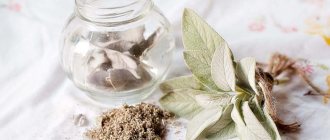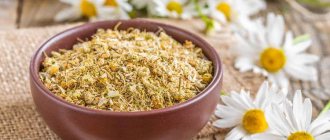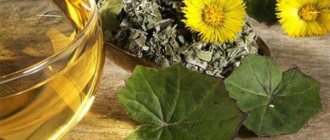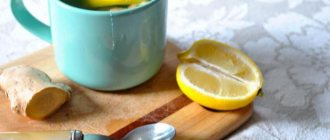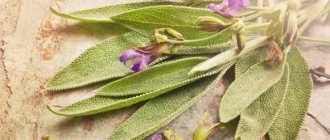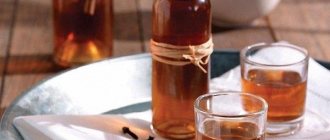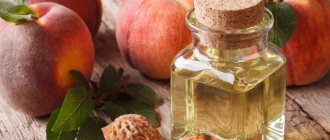Since ancient times, people have treated various diseases with folk remedies. And in the modern world, more and more patients are turning to the services of herbalists and healers. Looking around, especially in the spring and summer, you can see a huge number of medicinal plants, from which it is easy to prepare various healing potions and decoctions. Today we will talk about the medicinal properties and uses of sage for gargling.
Composition and healing properties
Let's consider the effect of sage-based remedies on sore throats. Sage contains a number of substances that determine its healing effect on the human body. These include:
- Natural antibiotic salvin.
- Essential oils.
- Vitamins and minerals.
- Organic acids.
- Tannins.
- Alkaloids.
- Fatty acid.
How to gargle with sage herb
Sage sage is a healing remedy known since ancient times that has found application in folk and official medicine. The disinfectant, antibacterial, and healing properties of the herb help cope with inflammatory processes in the body.
Pharmaceutical preparations are represented by brewing preparations, essential oils, and lozenges for resorption. To prepare an infusion at home, a medicinal variety of herb is used; other types do not have beneficial properties.
Sage for the throat is used for tonsillitis, pharyngitis, laryngitis, and respiratory viral infections.
Features and benefits of the plant
The Latin name of the medicinal herb is salvia officinalis. It is believed that it is associated with the verb “salvare” (to save) or with the expression “salvus” (to remain healthy).
In ancient Rome, the plant was highly valued by healers who used it to treat toothache, infectious diseases, and colds. In Russia, the name “salvia” refers to decorative varieties.
The healing effect of sage is explained by its rich composition. Flowers and leaves contain bioactive components:
- alkaloids, flavonoids, phytoncides with bactericidal and anti-inflammatory properties;
- essential oils, tannins;
- oleanolic, chlorogenic, ursolic acids (differ in antimicrobial, antiviral activity, prevent atrophic processes, improve immunity);
- macro- and microelements (iron, calcium, potassium, zinc, selenium, manganese, magnesium, sodium and others);
- vitamins of groups A, E, K, P;
- natural antibacterial agent salvin.
The maximum concentration of nutrients in sage is observed during the period of seed ripening. The medicinal variety is not found in the wild. Considering the unique properties of the plant, it is easy to understand why it is bred in garden plots and indoors.
Sage for diseases of the throat and oral cavity
Rinsing and washing with solutions from medicinal herbs are prescribed for acute and chronic forms of sore throat, laryngitis, tracheitis, pharyngitis, to relieve pain and inflammation in case of mechanical damage and burns of the larynx and pharynx.
Sage infusion softens irritated mucous membranes, destroys pathogenic microflora, and disinfects the mouth and throat.
The product acts as a mild anesthetic, relieving pain, and removes swelling due to its anti-inflammatory effect.
For purulent tonsillitis, the pharynx and tonsils are washed, clearing plaque, which helps remove plugs clogging the ducts of the tonsils. An obsessive sore throat, causing attacks of dry cough, is relieved by sucking lozenges with plant extract and regular rinsing.
The bactericidal and antiseptic effect prevents the spread of infection, the development of bronchitis and pneumonia. Inhalation with sage oil and compresses help cope with the disease.
The antimicrobial, healing properties of the herb are used in the treatment of stomatitis, gingivitis, gumboil, gum inflammation, for which they rinse the mouth 3-4 times a day.
Recipes with sage
Young shoots, leaves, and flowering tops are used to prepare medicines. Oil is extracted from fresh raw materials and used for inhalation, rinsing, cold and hot compresses. For drying, the leaves and tops of the stems are cut off during flowering, tied into bunches and hung in a warm place, protected from moisture and direct sunlight.
To avoid a musty smell, good air circulation is required. When using dryers, keep the temperature no higher than 40 degrees to prevent essential oils from evaporating. The process is complete when the stems become brittle and brittle. The leaves are not crushed, otherwise they quickly lose their flavor. Store raw materials in tightly closed jars for up to 24 months.
Infusion
Gargling with sage is an effective way to combat inflammation and plaque on the tonsils during sore throat. To prepare, grind a tablespoon of flowers and leaves of the herb, pour a glass of boiling water, close the container, and leave for half an hour.
After filtration, gargle up to seven times a day for 6–7 days. A weakly concentrated solution is prepared for children: a dessert spoon of raw material is steamed with 250 ml of boiled water, and 5 g of sea salt is added. Allow to cool, filter through cheesecloth.
The child should be able to gargle without swallowing the infusion. When using for the first time, you need to monitor the baby’s condition - there is a risk of developing allergic reactions.
Decoction
20 g of crushed leaves of the plant are steamed with 250 ml of boiling water, the dishes are placed in a water bath, heated for 5–7 minutes over low heat, allowed to cool, and filtered. Rinsing is carried out 4-5 times a day. After the procedure, it is not advisable to drink or eat food for 30–40 minutes.
Essential oil
Herbalists suggest gargling with a solution prepared from 200 ml of warm water with the addition of a teaspoon of honey, soda, a pinch of salt and 4 drops of sage oil. Effectively helps reduce inflammation and soreness during colds.
Tincture
Crushed dry leaves are poured with alcohol at a rate of 1 to 10, the container is tightly closed, and placed in a warm place for 48 hours. After filtering, the solution is added to boiled water or a decoction (15 ml per glass). For angina, the product eliminates discomfort and pain, swelling, and accelerates the removal of plaque on the tonsils.
The pharmacy sells infusions with medicinal herbs in filter bags. When making medicinal solutions, you need to follow the attached instructions on how to brew sage for gargling. Tablets with plant extract also relieve soreness and pain. Various flavoring additives make it possible to give lozenges to children who can dissolve them.
Ingestion of sage-based preparations is prohibited for pregnant women, as the substances contained in the herb provoke uterine contractions and negatively affect the development of the fetus. During feeding, alkaloids penetrate into mother's milk, entering the baby's body. In such cases, if your throat hurts, the doctor will recommend safe medications that are approved for this period.
Treatment with sage
The plant effectively fights pathogenic microflora that forms in the throat during infectious diseases, stopping the proliferation of harmful microbes and alleviating unpleasant symptoms. Depending on the severity of the process, treatment with herbal extract preparations is often used as an independent remedy or as part of complex therapy.
Rinsing
It is advisable to prepare a fresh portion of the solution for each procedure. If necessary, it is permissible to store the product in the refrigerator for 10–12 hours, warming it to a comfortable temperature before use.
When the first signs of tonsillitis appear, make an infusion of 250 ml of boiling water, a tablespoon of crushed leaves, 7 g of sea salt and brew all the ingredients in a thermos.
After an hour and a half, filter the liquid and gargle 4-5 times during the day.
For acute pain, a remedy is prepared from a combination of medicinal plants. Mix chamomile, pine buds, eucalyptus, peppermint leaves, thyme, and anise fruits in equal proportions. Add two parts of sage.
A large spoonful of raw materials is steamed with 200 ml of boiling water and boiled for 20 minutes in a water bath. Let it cool. 30 ml of solution is poured into a glass of distilled water. The procedure is carried out four times in 24 hours.
After the patient has gargled, it is advisable not to eat for an hour.
Inhalations
A decoction of sage or a mixture of medicinal herbs is poured into the pan so that the liquid does not reach the edges (otherwise there is a high risk of burns). The solution temperature should be +85–90°C.
Covered with a terry towel, lean over the container, inhaling the steam. The duration of the procedure is 6–10 minutes. It is acceptable to use sage oil and add 4-6 drops to the solution for a steam inhaler.
After the session, you cannot go out into the cold air, you need to abstain from food for one hour, you can drink a glass of warm milk.
Inhalations should not be performed when the patient has a fever. The procedure is not recommended for children under 10 years of age.
Use in medical practice
Sage is a natural antiseptic that is prescribed for the treatment and prevention of a number of diseases. The effectiveness of the drugs increases in combination with other medicinal herbs.
Pharyngitis
St. John's wort and sage are mixed in equal proportions. 2 tbsp. l. The raw materials are brewed in a thermos with two glasses of boiling water and allowed to brew for 1 hour. Strain, take 50 ml orally 3 times a day. If there is no allergy, it is useful to add honey. At the same time, it is recommended to gargle with the same solution 5-6 times.
Dry cough
10 g of leaves and flowers of the plant are poured with a quarter glass of water, 150 ml of liquid honey and 5 ml of lemon juice are added. Place on low heat, heat to a boil, remove from heat, leave to brew for 15 minutes. After filtering, pour into a glass container. Take 5 ml three times a day.
Sore, irritated throat
A tablespoon of crushed leaves is poured into a glass of milk, brought to a boil over low heat, and left for 20 minutes. After straining, divide into 2 servings and drink warm.
Sage decoction for gargling: instructions for use and reviews
Since ancient times, people have treated various diseases with folk remedies. And in the modern world, more and more patients are turning to the services of herbalists and healers.
Looking around, especially in the spring and summer, you can see a huge number of medicinal plants, from which it is easy to prepare various healing potions and decoctions.
Today we will talk about the medicinal properties and uses of sage for gargling.
Uses of sage
The plant has been used for medicinal purposes for a very long time as an antiseptic and anti-inflammatory agent. Sage has the ability to produce several “harvests” of green mass per year. Therefore, it is inexpensive and very accessible. Gargling with sage and other ways of using it have a healing effect on a variety of oral diseases.
Composition and healing properties
Let's consider the effect of sage-based remedies on sore throats. Sage contains a number of substances that determine its healing effect on the human body. These include:
- Natural antibiotic salvin.
- Essential oils.
- Vitamins and minerals.
- Organic acids.
- Tannins.
- Alkaloids.
- Fatty acid.
When is sage prescribed?
For throat diseases, the range of uses of this plant is quite extensive. It should be noted that this medicinal herb has no analogues in its effect. If there are no contraindications, sage must be used in therapy. Sage is used as a medicine in cases where the following ailments are diagnosed:
Effects of sage
Today in pharmacies you can buy various teas with sage, lozenges and tablets for sore throat, and herbal preparations. Thanks to its unusually rich composition, sage helps to quickly eliminate inflammation. Infusions of sage leaves for gargling have anti-inflammatory, bactericidal, antiseptic, disinfectant, healing, analgesic, and astringent effects. Even with severe disease, sage quickly cleanses the tonsils of purulent masses.
A particularly valuable property of this plant is that it helps get rid of a sore throat, which can provoke a cough of varying intensity. Please note that gargling with sage minimizes the risk of spreading the disease to the lower respiratory system.
Safety precautions
Treatment sessions using sage-based preparations are not recommended for everyone; please consult your doctor first. Side effects of natural medicines do not occur often, and allergic reactions to external use are almost never observed.
Gargling with sage does not harm pregnant women; only internal use is dangerous. Consultation with a doctor is also advisable. Such precautions are due to the fact that microdoses of essential oil contain hallucinogens and toxins that can tone the uterus. And this is fraught with miscarriages and premature birth.
For children under 5 years of age, due to the fact that they do not know how to gargle correctly and there is a high risk of swallowing part of the liquid, such procedures are contraindicated.
External and internal use of sage-based preparations for nursing mothers is also not advisable, as it inhibits lactation. The medicinal plant is even used to stop breastfeeding.
Watch additional video:
For various reasons, the following categories of patients should be treated with caution when gargling with sage:
- People with hormonal disorders (during menopause and menstrual irregularities);
- Suffering from gynecological diseases;
- Hypertensive patients;
- During exacerbations of liver and kidney diseases;
- Patients with hypothyroidism;
- People prone to allergic reactions.
Therapeutic procedures with sage should not be continued for more than 2 months. Otherwise, there is a great danger of slow poisoning.
In this article we discuss gargling with sage. You will find out whether you can gargle with sage, how the plant works for sore throat, pharyngitis and tonsillitis, and what contraindications it has for use. We will tell you how to brew sage for gargling for adults and children, and how to gargle with sage.
Contraindications
Side effects when taking medicines from sage are extremely rare. Most often they are associated with individual intolerance to the plant. For gargling, sage can be used by everyone, without age restrictions, but only if the tolerance of this plant is normal. There are strict restrictions for oral administration. Sage should not be used by children under five years of age, pregnant women and nursing mothers! In addition, medicinal drugs based on sage are prohibited for oral administration when:
- Hormonal disorders.
- Menstrual cycle disorders.
- Some gynecological diseases.
- Hypertension.
- Acute kidney and liver diseases.
Separately, it is worth saying that you cannot use this herb for rinsing for a long time, as this can lead to intoxication of the body. For adults, the duration of therapy should be no more than 2 months, for children - no more than a month.
Contraindications and precautions
The alkaloids contained in the plant are toxic and harmful to the body in overdose and long-term use. Even when rinsing, the components of the herb are actively absorbed through the mucous membranes. To avoid side effects, for adults the course of treatment does not exceed 8 weeks, for children – 4. It is not recommended to use sage for a sore throat in the following cases:
- pregnancy (the plant contains phytohormones that stimulate the production of estrogen and lower progesterone, which in the early stages can lead to miscarriage, and in the 3rd trimester – premature birth);
- period of breastfeeding - the herb suppresses the hormone prolactin, which leads to a decrease in the amount of milk in a nursing mother, due to which the drug is often taken to stop lactation;
- menstrual irregularities, increased estradiol levels;
- children under five years of age - children are more sensitive to bioactive substances and not everyone knows how to rinse without swallowing the solution;
- severe pathologies of the kidneys and liver;
- endometriosis, mastopathy, presence of tumors in the breast;
- severe arterial hypertension, epilepsy, increased psychomotor excitability;
- individual intolerance to substances contained in the plant.
When used correctly and carefully, sage is an effective remedy for fighting throat infections, coughs, and colds. However, it is possible to cure tonsillitis and a number of other pathologies only with an integrated approach and antibiotic therapy, which is selected by the doctor.
The healing properties of sage have been known since the times of Ancient Rome, where it was considered sacred and capable of prolonging life.
Local healers recognized the plant planted in the garden as a talisman for its owners against all sorts of diseases.
Ancient recipes for treating diseases with sage have survived to this day. It has a special role as a healing agent for problems of the throat and oral cavity. This is due to the presence of phytoestrogens and flavonoids in the plant. But most of all - with the inimitable oil with which it is rich. At the height of sage flowering (June-July) the concentration is up to 2.5%, at other times it is halved.
Causes and treatment of sore throat
Based on the appearance of discomfort and pain in the throat, one can conclude that the disease has begun. Let us note the most common causes of throat diseases:
- Viruses and bacteria. They are causative agents of sore throat, pharyngitis, and influenza.
- Hypothermia. This may occur, for example, when drinking ice cream or cold drinks.
- Ecology. Many residents of large cities face problems such as sore throat, hoarseness or increased dryness of the throat.
- Occupational diseases. Very often, translators and teachers suffer from partial or complete loss of voice and painful sensations in the throat.
Gargling with sage decoction
For this procedure, the apical inflorescences of the plant should be used. If medicinal raw materials are purchased at a pharmacy, then for inhalation and rinsing it is better to take raw materials by weight rather than packaged in bags. For treatment to be effective, it should begin when the first symptoms appear.
How to brew sage for gargling? You need to take a large spoon of the herb, brew a glass of boiling water and let it brew. Cool to room temperature, filter. The prepared raw materials should be used completely for gargling in one procedure. They will need to be performed up to 3 times a day. After rinsing, you should not eat or drink anything for 1 hour. Using sage as a gargle is quite effective for dry coughs. According to patient reviews, the product promotes better and gentler sputum discharge. After such procedures, expectoration usually begins, which means a natural healing process.
Recipes for treating throat with sage
Gargling with sage for pharyngitis, sore throat, laryngitis is the simplest and most famous way to use the herb. To make a decoction, you need to take a spoonful of dry herbs and pour a cup of boiled water. Let stand for two hours and then strain.
You should rinse your throat with the prepared product up to five times a day. Before use, the solution must be heated to a temperature of 37-38 degrees. There are other, no less effective methods.
First recipe. If your throat just starts to hurt, you can simply chew a few dry leaves in your mouth. These manipulations must be repeated every three hours. After two or three days, the symptoms will disappear completely. Second recipe. For chronic tonsillitis, sore throat and bacterial pharyngitis, it is recommended to use this method. How to brew sage for rinsing? To make the solution, you need to take a spoonful of herbs and pour a cup of boiled water. Let it brew for thirty minutes and then strain.
After this, add a spoonful of sea salt to the resulting product. Rinsing should be done five to seven times a day. Sage for a sore throat allows you to quickly wash out the purulent contents of the tonsils and prevent further spread of the infection.
Third recipe. For the throat, sage can be used as an alcohol tincture. To make medicine, you need to take fifty grams of leaves and pour two mugs of vodka. Cover tightly with a lid and place in a dark place for fifteen days.
When the solution is ready, it needs to be filtered. Approximately fifteen drops are added to warm water. For tonsillitis, sore throat, pharyngitis, gargle up to five times a day. You can also add salt and soda to the tincture.
Fourth recipe. An excellent remedy for treating illness is a herbal drink. How to brew a drink? To prepare the medicine you will need sage, pine buds, thyme, calendula, chamomile. All herbs are mixed in equal proportions and poured into a thermos. Then pour two glasses of boiled water and leave for about two to three hours.
The finished composition should be drunk up to two or three times a day. The duration of the treatment course ranges from ten to fourteen days.
Fifth recipe. You can brew sage as a gargle and drink it as well. To do this, the grass must be mixed in equal proportions with St. John's wort. Then pour two cups of boiled water and place in a water bath for about ten minutes.
After this, the broth is filtered and divided into several doses. You need to drink the finished product twice a day, fifty milliliters in the morning and evening hours. It is recommended to gargle every two to three hours.
Sixth recipe. If a sore throat is combined with a cough, then you can do inhalations with sage. To do this, add a spoonful of dry herbs to boiled water and pour two mugs of boiled water. You should breathe in pairs for fifteen minutes. The procedures must be repeated up to three times a day for five to seven days. Seventh recipe. If you have a dry cough with pharyngitis, then healing syrup will help. To make it, you need to take fifty milliliters of water and add ten grams of sage. Place in a water bath and boil for three minutes.
Then add about two hundred grams of liquid honey and maintain for another one or two minutes. When the product thickens, it needs to be diluted with lemon juice. You should take the medicine three times a day until complete recovery occurs.
Eighth recipe. If mucus accumulates in the respiratory tract, the following remedy will help. To make it you will need sage, honeysuckle, plantain and rosemary. All components are mixed in equal proportions. Fill with water and then place on the stove. You need to wait until it boils and then strain.
The prepared medicine is used to gargle up to three to four times a day for seven days.
Ninth recipe. If severe soreness occurs, a spoonful of dry herb can be filled with boiled milk rather than water. Let it brew for a while and then take it before bed. This product has a calming and enveloping effect.
First aid for sore throat
Rinsing with sage has a beneficial effect during the peak cold season. It is also indispensable for prevention. A decoction prepared on its basis helps reduce the risk of infection.
Sage for a sore throat is perhaps the most valuable and effective remedy of traditional medicine. We offer the following folk recipes:
- When you first feel a sore throat, you need to take a few fresh sage leaves and chew them thoroughly. It is recommended to repeat this procedure up to 3 times during the day. Even if you use only this method of treatment, improvements will occur within 3 days.
- For a sore throat, a decoction of this plant in combination with honey shows excellent results. The recipe is as follows: brew 1 tsp. dried raw materials 200 ml of boiling water and add 1 tsp to the infusion. honey The product should be drunk quite hot, but not scalding.
- We advise you to do a fairly effective, but not very pleasant procedure. Prepare juice from the stems and leaves of the plant, soak a cotton swab in it and treat the throat. Such treatment helps to quickly improve the condition.
Sage Rinse
The procedure relieves such unpleasant symptoms of colds as inflammation and soreness.
A simple solution is prepared from the following ingredients - soda (tsp), honey (tsp), a pinch of salt, sage oil (4 drops). Mix all this in a glass with warm water, then rinse your throat thoroughly.
This solution is made 3-4 times. per day, for each procedure. If the healing liquid is not used for some reason, it is placed in the refrigerator (no more than 10-12 hours), slightly warmed up to the desired temperature before use.
An infusion that is best prepared in a thermos will help to cope with a sore throat (and not only) at the initial stage - you need to mix a tablespoon of crushed leaves with sea salt (7 g), pour a glass of boiling water. After an hour and a half, the infusion is filtered, gargling with it at least 4-5 times a day.
To relieve acute pain, eucalyptus, chamomile, pine buds, peppermint, thyme, and anise are added to sage. After each rinse, it is not advisable to eat for about an hour.
Alcohol tincture for sore throat
This sage medicine can only be used if the strongest antiseptic effect of the medicine is required. It is best to prepare an alcohol tincture in advance so that you always have it on hand. Add 5 tbsp to 500 ml of alcohol. l. sage and leave in a dark place for 14 days. After this time, the medicine is filtered off. For rinsing, it is used as follows: 20 drops of tincture are diluted in 60 ml of warm water. When rinsing, you should use the entire dose of the medicine, the procedure should be carried out up to 8 times a day. If this method involves treating children under 10 years of age, you should take 10 drops of the product. To make the effect more obvious, sage tincture can be added not to warm water, but to a decoction of calendula, which is prepared as follows: 1 tbsp. l. Add raw materials to a glass of boiling water and allow to cool.
Gargling with sage - how it works, decoction recipes, how to use it in children
In this article we discuss gargling with sage. You will find out whether you can gargle with sage, how the plant works for sore throat, pharyngitis and tonsillitis, and what contraindications it has for use. We will tell you how to brew sage for gargling for adults and children, and how to gargle with sage.
For a sore throat, you can use sage decoction.
In folk medicine, sage is often used for sore throats. The medicinal raw materials are fresh and dried leaves, oil and extract of the plant. The leaves are chewed or infusions, decoctions, and sage solutions are prepared on their basis for gargling.
To treat dental diseases, sage is used as a mouth rinse. Infusions of the plant effectively localize foci of inflammation and have a disinfecting effect. The product is used for stomatitis, gingivitis, periodontitis. To relieve inflammation and reduce pain, you need to rinse your mouth with sage 2-3 times a day.
This plant contains a large amount of salvin - a natural antibiotic, essential oils, tannins, alkaloids, organic acids and vitamins. Thanks to these components, sage has antiseptic, anti-inflammatory, analgesic and bactericidal effects.
For gargling, sage is used for pharyngitis, acute tonsillitis and laryngitis . At the initial stages of diseases, products based on the plant in its pure form are used; to enhance the therapeutic effect, other medicinal herbs are added to sage. It is combined with chamomile, thyme, eucalyptus, mint, pine buds and calendula.
Let's look at several medicinal recipes based on the plant and tell you how to brew sage to gargle for sore throat, tonsillitis and pharyngitis.
Recipes for using sage for sore throat
For acute respiratory infections and tonsillitis, use sage infusion for the throat. The product is prepared from the leaves and flowers of the plant. For therapeutic procedures, a fresh portion of the infusion is used. As a last resort, the finished drink is stored in the refrigerator and heated in a water bath to 36-37 degrees before rinsing.
Ingredients:
- Sage leaves - 1 tablespoon.
- Sage flowers - 1 tablespoon.
- Water - 250 ml.
How to prepare : Grind the dry ingredients, pour boiling water, cover with a lid and insulate the container with a towel. Infuse the product for 30 minutes.
How to use : Gargle 6-7 times a day. The course of treatment is 5-7 days.
Result : Sage for tonsillitis effectively relieves inflammation and swelling of the tonsils, pain and sore throat.
In addition to the infusion, you can prepare a sage decoction for sore throats. This remedy has similar effects, while it additionally eliminates dry cough. The decoction is used for rinsing and taken orally.
Ingredients:
- Sage leaves - 20 gr.
- Water - 250 ml.
How to prepare : Pour boiling water over sage leaves, place in a water bath and cook the drink over low heat for 5 minutes. Strain the finished product through cheesecloth and pour into a thermos to keep it warm and not reheat before each use.
How to use : Gargle with the decoction 3-5 times a day. After the procedure, refrain from eating for 30 minutes. To treat cough, the drug is taken orally, 1 tablespoon up to 3 times a day.
Result : Sage for pharyngitis effectively relieves pain and inflammation of the pharyngeal mucosa, eliminates dryness and soreness.
The most potent sage-based remedy is an alcohol tincture. It is added to rinse solutions for sore throats, including purulent ones.
Ingredients:
- Sage leaves - 50 gr.
- Vodka - 250 ml.
How to prepare : Pour crushed sage leaves into a bottle, fill with vodka, close the lid tightly and leave for 2 days on a warm radiator.
How to use : Dilute 1 tablespoon of tincture in a glass of boiled water or sage decoction, the recipe for which we gave above. It is necessary to gargle with sage for a sore throat at least 4 times a day.
Result : Gargling with sage for a sore throat quickly eliminates painful sensations in the throat, plaque on the tonsils and their swelling.
Gargling with sage in children
Using sage decoction for a child, teach him how to gargle correctly
Children should begin using sage to gargle no earlier than 5 years of age. This limitation is due to the content of toxins and hallucinogens in the plant. When using products based on it for the first time, it is necessary to monitor the baby’s body’s reaction, because sage can cause allergies.
Ingredients:
- Sage leaves - ½ tablespoon.
- Sea salt - 1 teaspoon.
- Water - 250 ml.
How to cook : Pour boiling water over the sage leaves, cover with a lid, leave for half an hour. Strain the finished product and dissolve a spoonful of sea salt in it.
How to use : Gargle 5-7 times a day
Result : Gargling with sage for a sore throat effectively washes out pus from the tonsils, relieves inflammation and sore throat.
For more information about gargling with sage, watch the video:
Contraindications and precautions
Contraindications for gargling with sage:
- kidney pathologies;
- low blood pressure;
- hypothyroidism;
- individual intolerance;
- During pregnancy and breastfeeding;
- children under 5 years of age.
Sage contains toxic and hallucinogenic substances, so products based on it should not be used for a long time. The maximum course of treatment for adults is 2 months, for children - 1 month. Sage gargle should be used with caution when dealing with a wet cough, as the plant may aggravate it.
What to remember
- Sage has antiseptic, anti-inflammatory, analgesic and bactericidal effects.
- For the treatment of children over 5 years old, rinses with sage are used for sore throat, pharyngitis and tonsillitis.
- Sage contains toxic and hallucinogenic substances, so you should not use remedies based on it for a sore throat for a long time.
Sage tea
For burns, various injuries, and chronic throat diseases, it is recommended to prepare a gargle that is extremely gentle. To do this, 10 g of dried herb is poured into a thermos, poured boiling water (a glass) and left for an hour. After this, the infusion is filtered and divided into two parts - for morning and evening rinsing. The medication is taken into the mouth and the throat is treated for 30 to 40 seconds. Treatment must be continued until complete recovery. If you want to use this treatment for acute inflammation or to fight a sore throat, you need to gargle every hour, using about 150 ml of infusion per procedure.
Medical procedures for children
Gargling with sage for children is carried out only if they clearly understand what is required of them. As a rule, this procedure is not performed for children under 3 years of age.
If the child is under 10 years old, this procedure should be carried out only under the supervision of an adult, who will not only monitor the correctness of its implementation, but will also provide immediate assistance if water gets into the respiratory tract. During the initial procedure, it is necessary to prepare an antiallergic agent, which must be appropriate for the child’s age. It should be used in case of an undesirable reaction of the body to a drug.
Contraindications and precautions
Contraindications for gargling with sage:
- kidney pathologies;
- low blood pressure;
- hypothyroidism;
- individual intolerance;
- During pregnancy and breastfeeding;
- children under 5 years of age.
Sage contains toxic and hallucinogenic substances, so products based on it should not be used for a long time. The maximum course of treatment for adults is 2 months, for children - 1 month. Sage gargle should be used with caution when dealing with a wet cough, as the plant may aggravate it.
